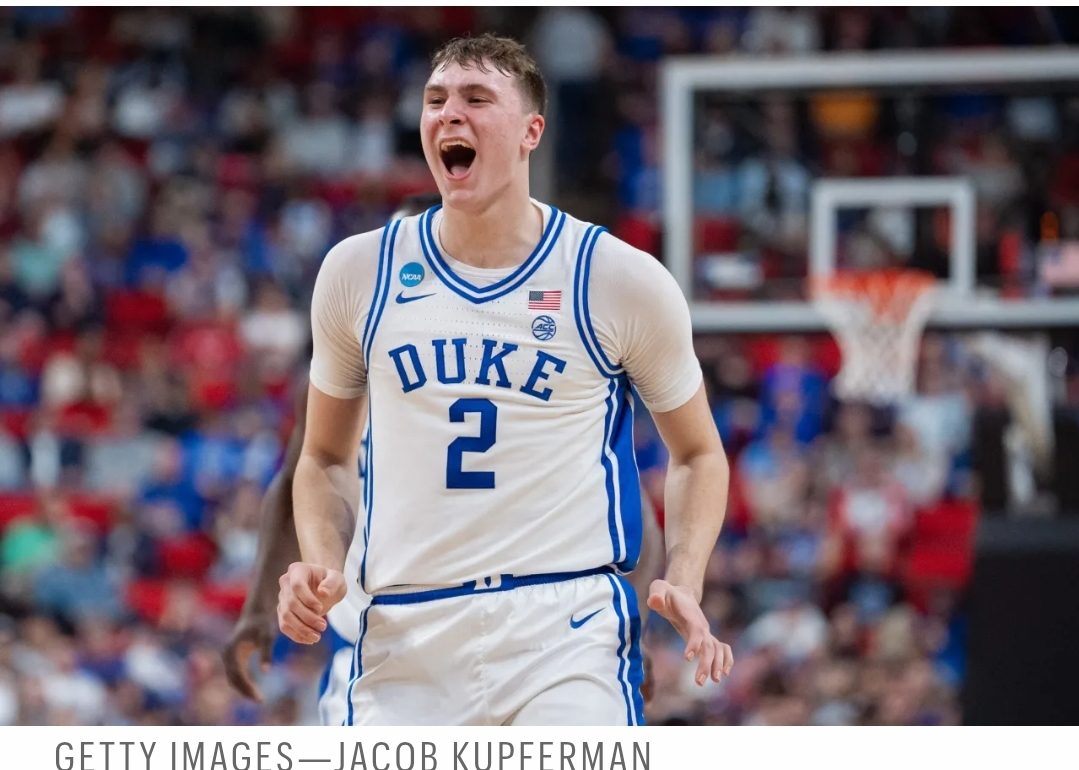Meet the March Madness Millionaires: From Duke’s Cooper Flagg to Purdue’s Braden Smith, College Athletes Are Raking in Eight-Figure NIL Deals
As March Madness sweeps across the nation, a new group of college basketball players is making headlines—not just for their on-court performances but for their off-court financial success. Thanks to the explosion of Name, Image, and Likeness (NIL) deals, these athletes are cashing in on their talents in ways that were unimaginable just a few years ago. Among them, stars like Duke’s Cooper Flagg and Purdue’s Braden Smith are leading the way, securing eight-figure NIL deals that are revolutionizing the college sports landscape.
Flagg, a 6’8″ forward from Maine, has become one of the most highly sought-after high school prospects in recent memory. Despite still being in high school, his NIL value has skyrocketed after a dominant performance at the prestigious McDonald’s All-American Game. Flagg, who is set to join Duke for the 2024-2025 season, has signed multiple lucrative endorsement deals with top brands, including global giants like Nike and Gatorade. His appeal goes beyond his basketball prowess—Flagg is an emerging social media star, with a rapidly growing following that only adds to his marketability. Estimates suggest that Flagg’s NIL deals could reach $10 million or more before he even plays a game for Duke, a staggering sum for an athlete yet to play in a collegiate contest.
Not to be outdone, Purdue’s Braden Smith has also become a poster child for the potential of NIL. The 6’3″ guard, who helped lead Purdue to a dominant regular-season performance, has made waves with his ability to balance the pressures of college basketball and lucrative business opportunities. Smith’s marketing potential was already apparent during his freshman season, and as Purdue’s tournament run continues, so too does his NIL earnings. He has partnered with several companies, including local businesses and national brands, and his market value is expected to hit the $10 million mark as he prepares for another successful season. Smith’s appeal lies not only in his on-court play but also in his personality and work ethic, which resonate strongly with brands looking to align themselves with student-athletes who embody discipline and authenticity.
These athletes are part of a growing trend of college players who are using NIL to secure financial futures far beyond what was ever possible before the NCAA adopted new NIL policies in 2021. For years, college athletes were prohibited from earning money based on their name, image, or likeness, but the advent of NIL has changed that forever. Today, college basketball players like Flagg and Smith, as well as others across various sports, are raking in millions, securing endorsement deals, personal branding opportunities, and even equity stakes in businesses.
The wave of NIL deals has also made it possible for athletes to become entrepreneurs in their own right. Some are launching their own apparel lines, while others are venturing into tech and lifestyle brands. With more states passing laws allowing NIL compensation and the increased visibility of college sports, it’s clear that the future of college athletics will look very different from the past.
While the financial windfall for college athletes is certainly a boon, it also raises questions about the shifting dynamics in collegiate sports. Concerns about the influence of money on recruitment, team chemistry, and even the structure of college athletics have emerged as NIL deals continue to grow. Nonetheless, for players like Cooper Flagg and Braden Smith, March Madness isn’t just about chasing championships—it’s about securing multi-million-dollar deals that will shape their careers for years to come.
As more athletes join the ranks of the NIL millionaires, it’s evident that the new era of college sports is here, and it’s not slowing down anytime soon.
















